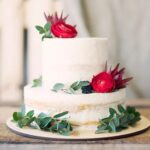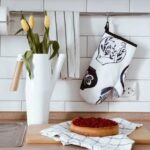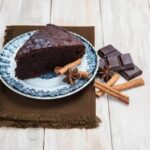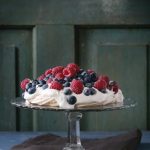Are you ready to take your cake decorating skills to the next level? In this article, we will explore the art of using a piping bag for cake decorating. Whether you’re a beginner or an experienced baker, understanding how to use a piping bag is essential for achieving professional-looking designs on your cakes. We will start by discussing the importance of using a piping bag and the different types available, setting the stage for mastering this essential tool.
When it comes to cake decorating, using a piping bag offers precision and control, allowing you to create beautiful designs and intricate details on your cakes. In this section, we will delve into the various types of piping bags and their specific uses, providing you with all the information you need to choose the right tool for your decorating needs. Understanding the different types of piping bags available will set you up for success in creating stunning cake designs.
In addition to learning about the different types of piping bags, we will also cover essential tools and materials needed for successful cake decorating with a piping bag. From choosing the right tips to sourcing high-quality supplies, we’ll provide detailed insight into everything you need to get started with confidence.
Whether you’re looking for tips on where to find the best supplies or recommendations for must-have tools, our comprehensive guide will ensure that you have everything you need for successful cake decorating with a piping bag.
Essential Tools and Materials for Decorating With Piping Bags
When it comes to cake decorating with piping bags, having the right tools and materials is essential for success. The first and most important item you will need is the piping bag itself. Piping bags come in different materials, such as disposable plastic or reusable cloth, and in different sizes to accommodate various designs and amounts of icing.
In addition to the piping bag, you will also need piping tips. These small metal attachments fit onto the end of the piping bag and come in a wide variety of shapes and sizes to create different designs. When selecting piping tips, consider what type of design you want to achieve on your cake and choose tips accordingly.
Other essential tools for cake decorating with piping bags include a coupler for easily changing tips without emptying the bag, a spatula for spreading icing on the cake before piping, and food coloring or gel for adding color to your icing. It’s also helpful to have a turntable for smoothly rotating the cake as you decorate, ensuring even distribution of icing.
When it comes to finding these essential tools and materials for decorating with piping bags, there are several options. Many craft stores carry a wide selection of piping bags, tips, and other decorating supplies. Additionally, online retailers offer an even broader range of options and often have specialty items that may be more difficult to find in-store.
To achieve professional-looking results when using a piping bag for cake decorating, it’s important to invest in high-quality tools and materials that can make the process easier and more enjoyable. By using the right equipment and supplies, you can take your cake decorating skills to the next level.
How to Prepare a Piping Bag for Use
To properly prepare a piping bag for use, there are a few essential steps to follow to ensure that the decorating process goes smoothly. First, it is important to select the right type of piping bag for the task at hand. There are disposable plastic piping bags and reusable cloth or silicone options available. Each type has its own advantages and inconveniences, so it is important to consider the specific needs of the decorating project.
After choosing the appropriate piping bag, it is crucial to cut the tip of the bag to accommodate the selected piping tip. The size of the opening will depend on the size and shape of the design being created. It is best to start with a smaller hole and then widen it as needed. This can be achieved by snipping off a small piece at a time until the desired diameter is reached.
Next, secure the piping tip onto the end of the piping bag by dropping it into place and twisting the top of the bag closed near its end. By doing this, decorators can avoid any unwanted gaps between the tip and bag that could result in icing seeping out during use. It’s also important to fill only two-thirds full with frosting.
By following these steps, decorators can ensure that their piping bags are properly prepared for use in cake decorating projects. Proper preparation will facilitate efficiency during application as artists bring their creative visions to life using this handy tool.
Choosing the Right Piping Tips for Different Designs
When it comes to cake decorating with piping bags, choosing the right piping tips is crucial in achieving different designs and textures on your cakes. There are various types of piping tips available, each serving a different purpose in creating beautiful and intricate decorations. In this section, we will discuss the different types of piping tips and their uses, as well as provide examples of the designs that can be achieved with each type.
Types of Piping Tips
There are several types of piping tips available for cake decorating, including round tips, star tips, leaf tips, petal tips, and specialty tips. Round tips are perfect for creating dots or writing words on cakes, while star tips are great for creating borders, stars, swirls, and rosettes.
Leaf tips are used to create leaves and other foliage elements, whereas petal tips are ideal for making flower petals and ruffles. Specialty tips come in various shapes and sizes to create unique designs such as basket weaving or lace patterns.
Designs Achievable With Different Piping Tips
Each type of piping tip can be used to create a wide range of designs on cakes and other baked goods. For example, round tips can be used to create simple dot patterns or write personalized messages on cakes. Star tips can produce beautiful borders and rosettes, adding texture and dimension to your decorations. Leaf and petal tips allow for the creation of realistic-looking flowers and foliage that can elevate the overall look of your cake.
Tips for Choosing the Right Piping Tips
When selecting piping tips for your cake decorating projects, consider the design you want to achieve as well as the consistency of the icing you will be using. Thicker icings may require larger piping tips to allow for easy flow and distribution of the icing, while thinner icings work best with smaller piping tips for more intricate designs. It’s also important to experiment with different tip sizes and techniques to find what works best for you.
In order to achieve professional-looking results in your cake decorating endeavors, it is essential to understand how different piping tips can be used to create a variety of designs. By experimenting with various piping tip sizes and practicing different techniques, you can elevate your cake decorating skills and take your creations to the next level.
Whether you’re aiming for simple elegance or intricate detailing on your cakes, choosing the right piping tip is key in bringing your creative vision to life.
Basic Piping Techniques for Cake Decorating
To begin with, piping a border is one of the most basic and essential techniques for cake decorating with a piping bag. This technique is usually used to outline the edges of the cake or to create a border around different sections of the cake, such as between layers.
To achieve this, you will need to use a round piping tip and hold the piping bag at a 45-degree angle to the surface of the cake. Gently squeeze the bag while moving it in a continuous line around the edge of the cake to create a neat and even border.
Another important basic piping technique for cake decorating is writing messages or names on cakes using a piping bag. This adds a personal touch to your creations and can be done using a small round or fine writing tip.
Practice writing with icing on parchment paper before attempting to write directly on your cake. Remember to apply even pressure on the bag while writing and plan out your spacing beforehand to ensure that your message is clear and easy to read.
Rosettes are decorative swirls often used as embellishments on cakes and cupcakes. To pipe rosettes, use a star-shaped piping tip and start in the center of where you want your rosette. Apply steady pressure while squeezing out icing in a circular motion, working from the center outwards in one continuous motion. Release pressure once you have achieved your desired size for the rosette. Repeat this process for each rosette, ensuring consistency in size across all decorations.
These basic piping techniques for cake decorating are foundational skills that every baker should master before moving on to more complex designs. Practice these techniques regularly, and soon enough, you will be able to create professional-looking decorations on your cakes using just a piping bag and some creativity.
Looking for more tips? Consider checking our guide on how to use piping bag for cake decorating.
Advanced Piping Techniques for Cake Decorating
Once you have mastered the basic piping techniques, you may want to challenge yourself with more advanced designs and textures. With the right piping tips and a steady hand, you can create stunning decorations on your cakes and desserts.
Here are some advanced piping techniques to take your cake decorating skills to the next level:
1. Royal Icing Filigree: Using a fine round piping tip, practice creating delicate lace-like patterns on your cakes with royal icing. This technique requires precision and patience, but the results are absolutely breathtaking.
2. 3D Floral Designs: With the right petal and leaf piping tips, you can pipe intricate 3D flowers and foliage onto your cakes. Experiment with different colors and arrangements to add a touch of elegance to your creations.
3. Basket Weave: This classic technique involves crisscrossing piped lines to create a basket-like pattern on the sides of your cake. With a little practice, you can achieve a realistic woven effect that adds texture and depth to your design.
4. Embroidery: Mimic the look of embroidered fabric by using a small round tip to pipe intricate patterns onto your cake. This technique is perfect for adding a unique touch to wedding cakes and special occasion desserts.
Remember to practice these advanced piping techniques before using them on a special cake or dessert. With time and patience, you can elevate your cake decorating skills and create beautiful edible works of art.
Now that you’ve learned about advanced piping techniques for cake decorating, it’s time to practice and perfect these skills. With dedication and creativity, you can take your cakes to the next level and impress everyone with your stunning designs.
Troubleshooting Common Piping Bag Issues
Using a piping bag for cake decorating can be an incredibly fun and rewarding experience, but it is not without its challenges. There are several common issues that may arise when using a piping bag, but with the right knowledge and preparation, these issues can easily be avoided or resolved. Here are some common piping bag issues and how to troubleshoot them:
1. Clogging: One of the most frustrating issues when using a piping bag is clogging. This occurs when the opening of the piping tip becomes blocked, resulting in uneven or interrupted piping. To avoid clogging, make sure that your frosting is at the right consistency – not too thick or too thin. Use a smooth, lump-free frosting and avoid overfilling the piping bag.
2. Leaking: Another common problem with piping bags is leaking. This happens when the frosting seeps out from the top of the bag or between the seam where the piping tip is attached. To prevent leaking, double-check that your piping tip is securely attached to the bag and twist the top of the bag tightly to create pressure that prevents leakage.
3. Bursting: Piping bags can also burst if they are overstuffed or if too much pressure is applied when squeezing the frosting out. To avoid bursting, only fill your piping bag with as much frosting as you can comfortably handle and gently apply pressure when decorating your cake.
By being aware of these common issues and following these troubleshooting tips, you can ensure a smooth and enjoyable experience using a piping bag for cake decorating. Remember that practice makes perfect, so don’t be discouraged by initial challenges – keep experimenting and honing your skills with the help of a reliable set of tools and materials.
Creative Ideas for Cake Decorating With Piping Bags
Cake decorating with piping bags can be an incredibly fun and creative process. Once you have mastered the basic techniques, you can start experimenting with new ideas to create unique and stunning cake designs. Here are some creative ideas for using a piping bag to take your cake decorating to the next level.
One idea is to use different colored frosting in the same piping bag to create multi-colored designs. To do this, simply paint stripes of different colored frosting inside the piping bag before adding the main color. When you pipe the frosting onto the cake, the colors will mix together and create a beautiful marbled effect. This is a simple yet effective way to add visual interest to your cakes.
Another creative idea is to use a variety of piping tips to create different textures and patterns on your cakes. For example, using a star-shaped tip can create a beautiful textured effect, while a petal tip can be used to pipe delicate flower designs. By experimenting with different tips and techniques, you can add depth and dimension to your cake decorations.
You can also get creative with stencils and templates when using a piping bag for cake decorating. Simply place a stencil or template onto the surface of your cake and pipe over it with frosting. When you carefully remove the stencil, you will reveal a beautifully detailed design on your cake. This technique is perfect for creating intricate patterns and designs with ease.
| Creative Cake Decorating Ideas | Description |
|---|---|
| Multi-colored Designs | Use different colored frosting in the same piping bag for marbled effects |
| Textured Effects | Experiment with different piping tips to create varied textures and patterns on cakes |
| Stencils and Templates | Use stencils or templates while piping frosting onto cakes for detailed designs |
Conclusion and Resources
In conclusion, using a piping bag for cake decorating is an essential skill for anyone who wants to create beautiful and professional-looking cakes. From preparing the piping bag to mastering basic and advanced piping techniques, this article has provided a comprehensive guide to help you get started. By following the step-by-step instructions and tips outlined in this article, you can enhance your cake decorating skills and impress your friends and family with stunning designs.
For those new to cake decorating, it can be overwhelming to know where to start when it comes to purchasing supplies and tools. However, with the detailed list of essential tools and materials provided in this article, along with tips on where to find quality supplies, you will be well-equipped to begin your cake decorating journey.
Whether you are looking for piping bags, tips, or other cake decorating tools, there are plenty of resources available both online and in stores.
In addition to the practical guidance offered in this article, it’s important to remember that practice makes perfect when it comes to using a piping bag for cake decorating. Don’t be afraid to experiment with different designs and techniques mentioned here as well as creative ideas beyond what was discussed. With determination and patience, along with the information provided here as a foundation, you will soon become skilled at using a piping bag for cake decorating.
Frequently Asked Questions
How Do You Transfer Icing to a Piping Bag?
To transfer icing to a piping bag, first choose the right size of piping bag for the job. Then, spoon the icing into the bag, being careful not to overfill it. Once filled, twist and push the icing down towards the tip to remove any air bubbles.
How Do You Use a Piping Bag for Icing?
When using a piping bag for icing, hold the bag with one hand and use the other hand to guide and control the flow of icing. Apply even pressure with your dominant hand while using your non-dominant hand to guide the nozzle and create your desired design.
How Do You Put a Nozzle in a Piping Bag?
Putting a nozzle in a piping bag involves cutting a small hole at the bottom of the bag, then inserting the chosen nozzle into this hole from the inside of the bag. Press firmly to secure it in place without any gaps around it. This ensures that the frosting will flow smoothly through the nozzle during use.

Welcome to my blog about home and family. This blog is a place where I will share my thoughts, ideas, and experiences related to these important topics. I am a stay-at-home mom with two young children. I hope you enjoy reading it! and may find some helpful tips and ideas that will make your home and family life even better!





